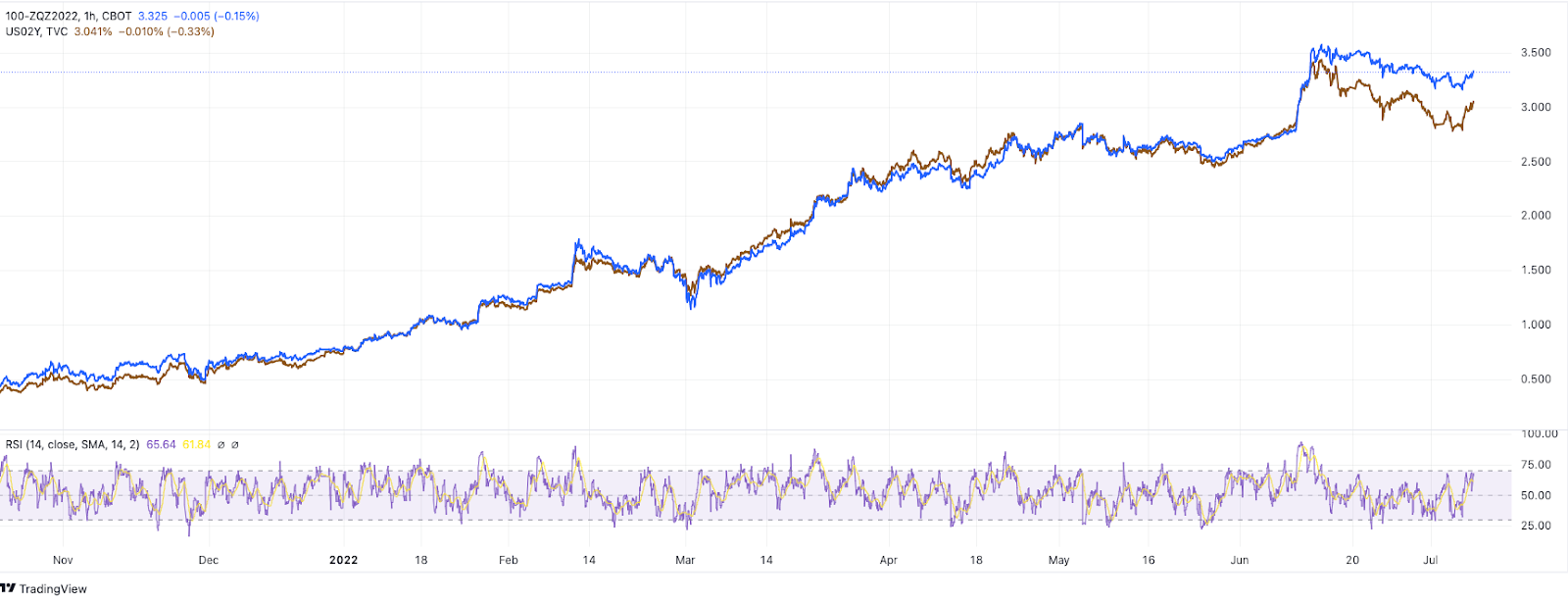The Fed minutes had a more hawkish tone than the market expected, primarily based on the big moves in rates following its release. If the minutes tell the tale of the Fed's intentions, the recent bond rally is likely over, and yields are bound to move higher again.
The most obvious place to start with is the 2-year rate, as it approaches a potential technical break out, which is likely to send the 2-year rate back to its current highs, and probably go higher. The yield has surged back over 3% since July 7, after hitting a low of 2.72% the morning of July 1.
This has resulted in the 2-year yield moving above a downtrend that started on June 14 when the rate hit 3.45%. This is significant because it keeps the relative strength index trending higher and momentum bullish for rates rising. The bullish RSI trend for rates started back in December 2020. A clean break-out could result in the 2-year moving back to 3.25% and potentially to new highs in the coming weeks.
Rates May Be Breaking Out
The 2-year rate has been tracking the interest rate of the December 2022 Fed Fund Futures. The relationship has been in place since the fall of 2021. If the Fed is going to keep to its projections for raising the overnight rate to 3.4% by year-end, then it seems likely that the December Fed Fund Futures should continue to rise from its current 3.3% and pull the 2-year rate up with it over time.
In recent weeks, the markets were pricing fewer rate hikes from the Fed, with the Fed Funds Futures for December falling to around 3.10% from a peak of nearly 3.6%. That decline in the future path of monetary policy may have proven to be too low, given the reading of the Fed minutes which seemed to suggest the Fed sees the more significant risk being inflation running persistently hotter than expectations.
Stocks Will Need To Fall Further
Of course, higher rates will negatively impact equity prices, as they have done so in the past. Higher interest rates help drag the earnings and dividend yields of the S&P 500 and stocks in general higher. This is reflected by a lower PE ratio and, therefore, lower prices for the index overall.
The spread between the S&P 500 dividend yield and the 10-year Treasury rate remains very high at more than 1.2%. Historically, the spread has only been this wide on some occasions and would suggest that the dividend yield of the S&P 500 even needs to rise further or the 10-year rate begins to fall for the spread to start to shrink.
It seems more likely, though, in this high inflation rate environment, that the S&P 500 dividend yield will rise more, helping to close that spread, which would indicate that the S&P 500 price needs to fall further and that the stocks are still expensive relative to bonds.
If this is the end of the move lower in rates, then it seems likely that the relative calm witnessed in the equity market this past week is likely to be over too.
